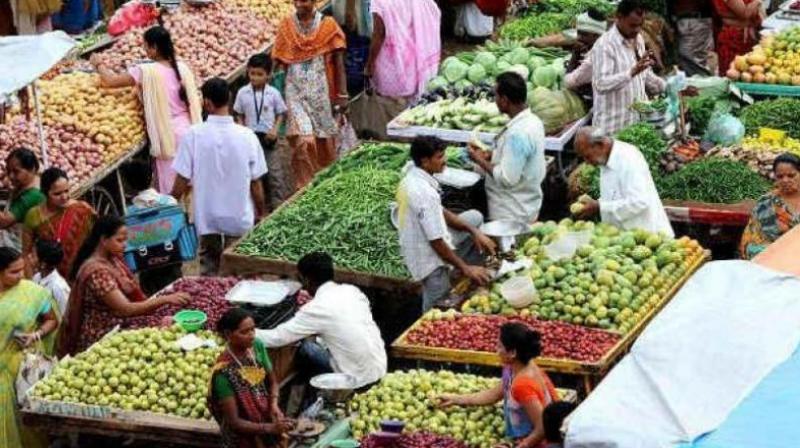Inflation hits 7-month high on costly food

Hyderabad: Retail inflation in the country picked up in October to a seven-month high, driven by faster rise in prices of food, fuel and housing, dampening chances of an interest rate cut by RBI next month. According to government data released on Monday, the annual consumer inflation in October increased to 3.58 per cent from a year ago.
The prices of food products, which have the highest weightage in the product basket that determines the inflation number, grew 2.26 per cent. The prices of housing has risen by 6.68 per cent followed by fuel and light at 6.36 per cent, clothing and footwear by 4.76 per cent. Crucial services such as education, healthcare, personal care, etc have seen an inflation of 3.48 per cent. A study of government data suggests that the retail inflation would have been much higher if the price of pulses had not fallen by 23 per cent on account of bumper crop this year.
People bore the brunt of higher vegetable prices. The cities have been the most hit as vegetables have costlier by 11.67 per cent, while villages have seen a rise of 5.23 per cent. The pace of price rise of crucial services like heal-thcare, education, among others has been higher in rural areas compared to urban areas. The price rise in services appear to have been impacted by the implementation of GST as most services are taxed at 18 per cent compared to 14.5 per cent under the previous service tax regime.
Some analysts expect the GST Council’s decision on Friday to slash tax rates on 178 items to 18 per cent from 28 per cent could marginally lower retail inflation in coming months. “There is, however, a low likelihood of a rate cut by the RBI in the immediate term,” said Aditi Nayar, an economist at Icra adding that inflationary expectations could remain high in the second half of the fiscal year that ends in March. Retail inflation has been steadily rising since June, when it eased to 1.46 per cent — its slowest pace since India started releasing such figures in January 2012, based on combined data for rural and urban consumers.

